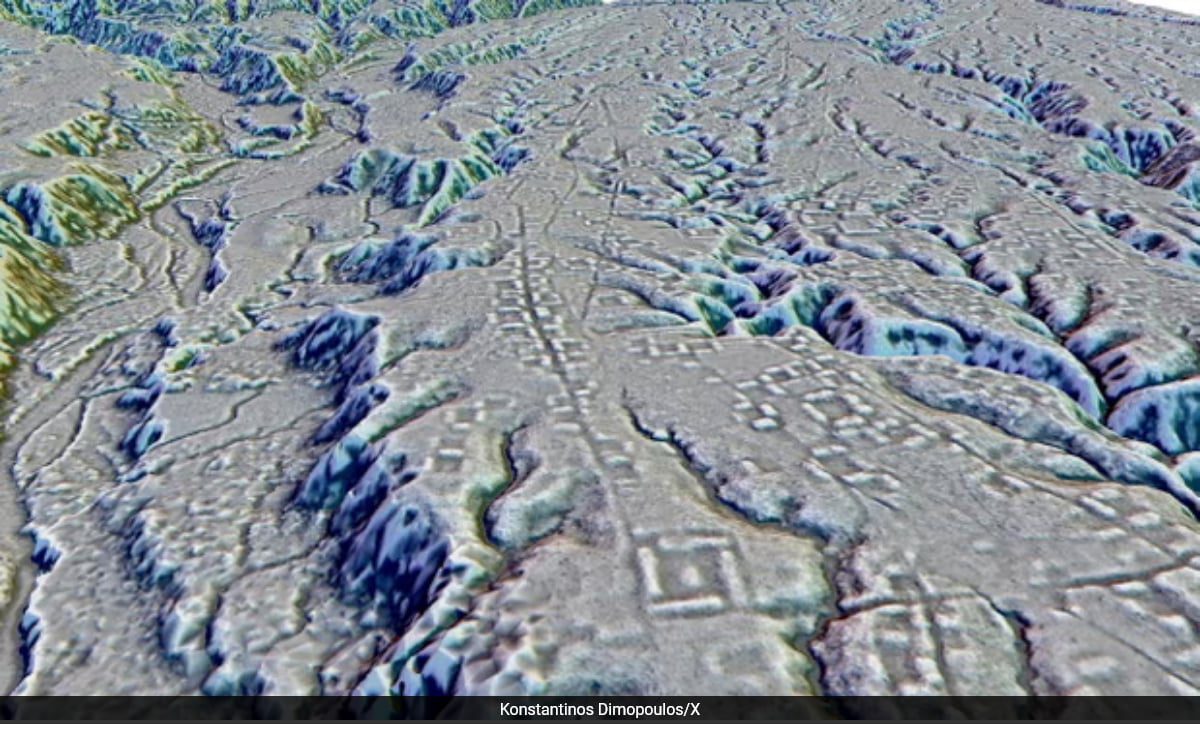
According to archaeologists, the cities look like a lost civilization of farmers 2,500 years ago.
Paris:
Archaeologists have discovered the largest and oldest network of pre-Hispanic cities ever found in the Amazon rainforest, revealing a lost 2,500-year-old civilization of farmers.
The vast site, covering more than 1,000 square kilometers (385 square miles), was long hidden by jungle in the Obano Valley in the foothills of the Andes mountain range in eastern Ecuador.
However, a French-led team of researchers used laser mapping technology taken from above, combined with archaeological excavations, to reveal 20 settlements – including five large cities – connected by roads.
Stephen Rosten, an archaeologist at the French CNRS research center and lead author of a new study, told AFP that it was like discovering an “El Dorado.”
The scale of this urban development — which includes earthen houses, ceremonial buildings and agricultural drainage — has never been seen before in the Amazon, Rustin said.
“It is not just a village, it is an entire landscape that has been domesticated,” he said.
Rustin said he discovered the first traces of this lost civilization 25 years ago, when he discovered hundreds of hills in the area.
In 2015, his team of researchers flew over the area using a laser technology called lidar, which allowed scientists to look across the forest canopy “as if we had cut down all the trees,” Rustin said.
– 'Like New York' –
They found more than 6,000 earthen mounds and rectangular earthen platforms that served as home bases for the “Obano people.”
On the floors, researchers found “all the household remains one would see in a home — fireplaces, large ceramic jars for beer made from corn, grinding stones, seeds, tools,” Rustin said.
He added that it was striking that all the cities were intersected by large, straight streets – “just like in New York.”
Some cities have a large central alley where people from surrounding villages gather, Rustin said, comparing these streets to the streets of the ancient city of Teotihuacan in modern-day Mexico.
Rustin speculated that several thousand people may have attended such festive occasions, although further analysis has been conducted to estimate the number of people living in the area.
Some of the mounds are up to 10 meters (33 ft) high, suggesting that they were not houses but common areas for rituals or festivals.
The small fields show that the agricultural community “exploited the smallest empty space to ensure that it bore fruit,” Rustin said.
He pointed out that all these achievements required leaders, planners and engineers to plan the roads.
What happened to the previously unknown Obano people – given this name by researchers – is unknown.
Construction on the first mounds is believed to have begun between 500 BC and 300-600 AD, around the time of the Roman Empire.
Other large villages discovered in the Amazon region date back to between 500 and 1500 AD, according to the study published in the journal Science on Thursday.
This network of cities is “much older and much larger,” Rustin said.
He added that the discovery shows that “there were not only hunter-gatherer societies in the Amazon, but there were also complex urban populations.”
Rustin said that “a kind of Western arrogance” had long held that it was impossible – before European colonization – that people in the Amazon would have been able to build such a complex society.
“It is time to reconsider this degrading view of the Amazon people.”
(Except for the headline, this story has not been edited by NDTV staff and is published from a syndicated feed.)

“Infuriatingly humble alcohol fanatic. Unapologetic beer practitioner. Analyst.”
